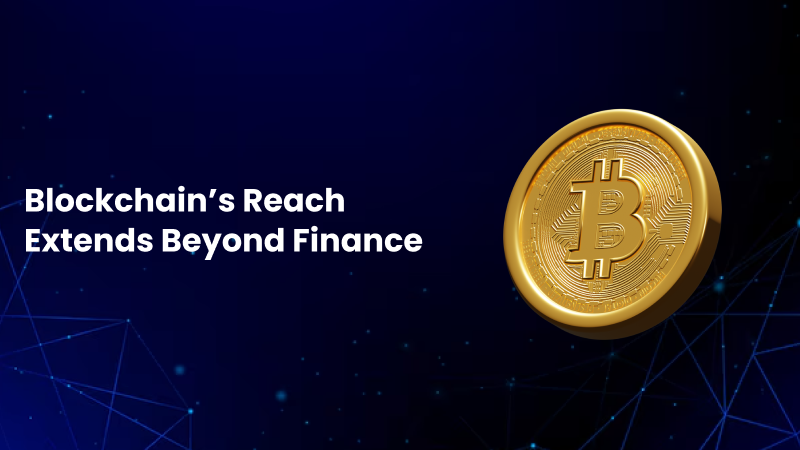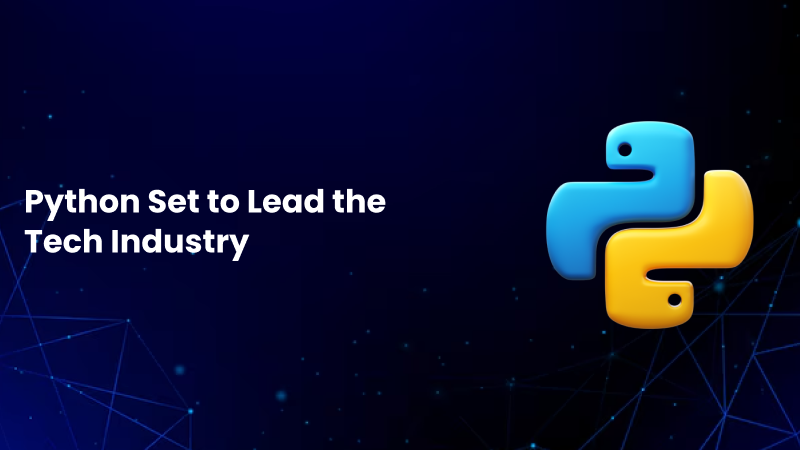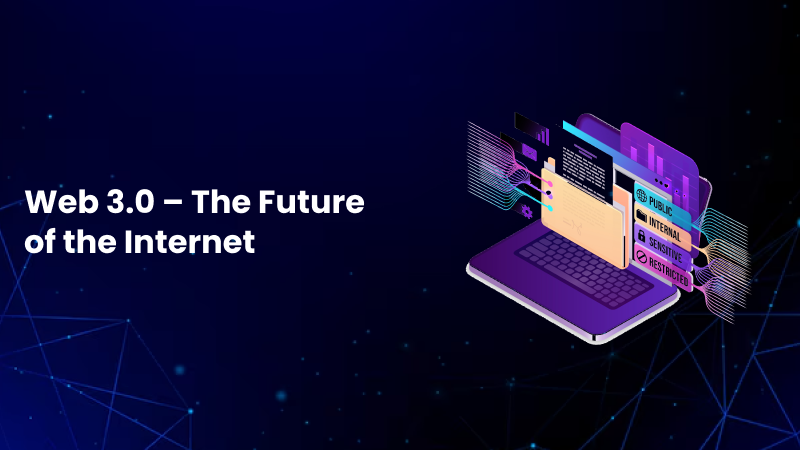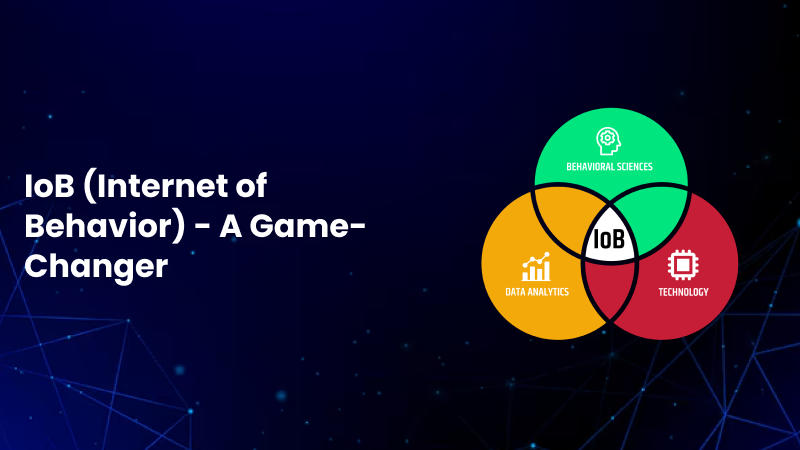
In 2025, the software development industry will be bustling with fast-paced technological innovations and shifting trends. Businesses are operating in an environment where undergoing a digital transformation is not just an option – but it’s a root to exist and enhance. Ranging from blockchain reforming stable transactions to AI redefining user experiences – innovation is at the coronary heart of all of it.
As businesses face economic constraints along with growing inflation and tighter budgets, they’re finding methods to do greater with much less and embracing creative solutions. Cloud-based total structures, ethical AI, and automation equipment have become key trends, however, the call for sustainable and scalable tech is repetitively growing.
With enterprises adopting more advanced and innovative software development services, the IT industry is expected to grow at an annual rate of 5% by 2025 – this growth is not just about following trends but also about securing a winning position.
So, if you want to catch up on the latest software development trends of 2025, this blog will help you out!
Latest Software Development Trends
However, the exact landscape of 2025 remains uncertain, these insights shed light on the latest software development trends and highlight the tools and strategies driving the industry's evolution. Let’s dive in!
AI Evolving into a Daily Assistant
AI is switching roles, from writing the code to final product delivery in software development, and simplifies everything. Tools such as GitHub Copilot assist developers by providing them with real-time code suggestions to cut down repetitive tasks and hasten the process of development. Automated testing platforms, such as Test.ai and Applitools, make it easier to catch bugs early by being integrated directly into CI/CD pipelines, thus guaranteeing smooth error-free releases.
Though, that doesn't stop here at coding and testing. AI-enabled project management applications, such as Jira Advanced Roadmaps, provide predictive analytics for teams so that they better plan their use of time and resources. In the operations part, AIOps solutions observe the infrastructure closely to spot and even recommend immediate fixes so the system remains smooth and problem-free, even with minimum human intervention.
By relieving developers of these cumbersome tasks, AI allows them to be more innovative. With the advancement of AI, it is expected to integrate even more closely with cloud services. In other words, it is expected to perform real-time computations and provide smarter, more scalable solutions across industries. This does not go against the most recent prevailing trends in software development; on the contrary, it opens up the future to become more productive and futuristic.
The Tech Industry’s Big Bet on Progressive Web Apps
Since Progressive Web Apps launched in 2015, it has made a lot of progress. This technology is finally receiving the mass adoption it deserves. The global PWA market will be valued at about $10.44 billion by 2027, according to the report of Emergen Research.
With mobile usage on the rise, PWAs give website owners a revolutionary opportunity to deliver an app-like experience while reducing development costs by significant amounts. Smooth performance across devices and enhanced user engagement make PWAs a go-to solution for businesses looking to take the lead in the technological era.
Take the case of Pinterest, for instance—a success story that speaks of the power of PWAs. With user engagement and platform performance being a problem, Pinterest revamped its website. After analyzing the key problem areas, the company rebuilt its site on React and turned it into a Progressive Web App. The final results turned out to be unusual – a 40% boom in user time spent on the platform and a 44% growth in ad sales.
If you need to optimize mobile reviews at the same time as keeping expenses in check, investing in a PWA is probably the answer to your business needs. With the developing adoption of PWAs, now could be the perfect time to make use of this technology to enhance engagement and drive increase.
The Rise of Low-code or No-code Development
Low-code and no-code structures are converting the way businesses build software programs—speedy and without difficulty. These tools are available with visual interfaces and pre-built additives that can be used to build solutions or automate workflows without necessarily needing to be a coding guru. This help teams get to market faster, cut down on the need for engineering resources, and respond more quickly to market changes.
Despite that, these platforms aren’t a replacement for skilled developers. For complex projects, you still need experienced developers to build systems that are secure, scalable, and vigorous. While tools like Microsoft Power Apps and Bubble are great for speeding up certain tasks, they can’t yet match the level of customization or scalability needed for larger, enterprise-level projects
As opposed to traditional development, low-code, and no-code platforms are actually more likely to expand. They’re especially useful for prototyping and sparking innovation, particularly for startups and small businesses. As these platforms improve, they’ll open up even more possibilities, but talented developers will always be essential for solving tough challenges and delivering top-quality solutions.
Therefore, the future is a partnership between these tools and an expert developer – brought together for efficiency and innovation to meet the demands of modern software development.

Blockchain’s Reach Extends Beyond Finance
Today, in 2025, the blockchain era is reshaping industries a long way beyond its economic origins, with groups across sectors spotting its huge ability.
This groundbreaking technology gives the best security by organizing data in decentralized, distributed systems that are nearly impossible to hack or alter, making blockchain a reliable solution for securing transactions and ensuring data integrity.
Although – blockchain was initially developed for financial applications – it has spread into distribution, manufacturing, healthcare, and beyond. According to Statista, the blockchain market is projected to reach $39.7 billion by 2025, indicating a growing demand for this technology With its ability to transform processes and improve security, blockchain is solidifying its position as a cornerstone technology for the future.
The Growing Popularity of IoT
We’re entering an exciting future pushed through the speedy growth and adoption of smart devices and IoT solutions.
From smart homes to commercial monitoring systems, IoT gadgets bridge the divide between the physical and digital worlds to provide us with deeper insights into our everyday sports. While the enterprise confronted a brief-term setback in early 2020 because of decreased tech investments in positive sectors, it has rebounded and is projected to increase the IoT region’s marketplace revenue to be more than $1 trillion alone by 2026 with a compound annual growth rate (CAGR) of 10.4%, according to IDC.
Advancements in AI, machine learning (ML), and edge computing are making IoT solutions increasingly effective – therefore, with predictive analytics and automation capabilities, these innovations further expand the realm of possibilities for IoT applications and make it even more valuable across the board, for all industries
Key IoT Trends to Expect in 2025
IoT & Machine Learning – Simplifying data analysis to reduce the need for manual processing.
Digital Twins – Creating interactive simulations of real-world objects to bridge the physical and digital worlds.
Enterprise Metaverse – Enabling businesses to integrate services and interact more freely with the physical world.
Blockchain for Security – Using blockchain technology to protect IoT device data in order to combat cybercrime.
Smart Cities – Using IoT to increase security, ease traffic, and upgrade urban infrastructure.
Product Automation – Increasing use of automation in production processes across industries.
Healthcare IoT – Transforming early disease detection to improve recovery chances for patients.
2025: The Year of 5G
As the rollout of 5G picks up speed and we circulate into a brand new generation of technology – experts predict that through 2025, more than 1.4 billion devices globally might be related to this network; this is nearly 15% of the worldwide overall.
So, what’s all the noise about 5G?
5G isn’t just a high-speed version of 4G but an overhauling network architecture that promises to transform the way humans communicate and engage with the virtual world - speeds and capabilities that go way beyond what anyone has seen yet are on offer.
This is not just to make many life experiences better, but also about setting the future path for the next wave of leading market technologies in IoT, AR, and AI.
With 5G on the horizon, the future is looking incredibly bright—now is an ideal time to get ahead of the curve. Whether you're preparing your current apps for the speed of 5G or developing new ones that can take maximum benefits of this avant-garde technology, there's no better moment to plunge in and innovate.

Python Set to Lead the Tech Industry
The growing trends of machine learning and data technological know-how across industries are predicted to push the demand for skilled Python developers to new benchmarks.
With over 700 programming languages to select from, businesses frequently conflict to pick the right one for their app or web development projects – and that’s in which Python shines.
Known for its versatility and ease of use, Python is a Swiss Army knife for developers – used to build websites, develop mobile apps, or create machine learning models. Python can perform a wide range of tasks that make it a pass-to-choice for businesses and developers alike – no surprise tech companies swear through its strength for tackling complex initiatives.
Key Python Trends to Expect in 2025
AI and ML Applications
Python in Game Development
Python for Internet of Things (IoT)
Web and Mobile App Development
Automation and Robotics
React Native’s Ongoing Success
With easier building of high-quality cross-platform apps based on a single codebase, React Native continues to lead the hybrid development space.
This is game-changing: it simplifies an application's development process, saving developers as well as businesses tons of time and labor.
This transformative framework has simplified the app development process, saving developers as well as businesses tons of time and effort. React Native has turned out to be quite popular among enterprises trying to upsurge their segment of the market in the modern-day economic system globally.
The Growth of Augmented Reality and Virtual Reality
By moving the way businesses hook up with consumers and how consumers enjoy purchasing online - AR and VR are reforming e-commerce trends.
These technologies convey digital purchasing to existence that permits customers to visualize merchandise of their space – not only increasing sales but also increasing engagement and confidence. Businesses are utilizing AR’s immersive features i.e., 3D modeling, virtual try-ons, and digital showrooms to elevate the shopping experience.
AR and VR technology, as a result of swift advancements – turned out to be more inexpensive and easily accessible for all business sizes to deliver unique experiences and grow in the digital domain.

Web 3.0 – The Future of the Internet
Wondering what the internet's future holds? It’s Web 3.0—the subsequent massive jump inside the software development world.
Building on its predecessors, Web 1.0 and Web 2.0, Web 3.0 is being shaped by today’s avant-garde technologies – includes three core IT architecture tiers, that are:
Interaction: The content, hardware, and software we use to communicate.
Computation: The logic that powers these interactions.
Information: The structured data needed for secure and efficient computing.
Unlike static pages of earlier web versions, Web 3.0 applications are highly interactive and complex - built using JavaScript. They are more dynamic, and responsive, and can exploit modern hardware to achieve faster performance.
Web 3.0 apps will eventually be compatible with all platforms currently available on desktop browsers and high-end smartphones, ensuring smooth experiences everywhere. The latest advancements in Web 3.0 are set to redefine how we connect with the digital world to transform our virtual experiences like never before.
The Evolution of Cloud-Native Technologies
Ever wondered what "cloud-native" really means? Let’s dissect it.
Cloud-native technologies are all about building, executing, and maintaining cloud-specific applications. Tools and practices get the most out of cloud computing models to provide scalable and flexible workloads in environments i.e., private, public, or hybrid clouds.
By utilizing components like microservices, containers, immutable infrastructure, service meshes, and declarative APIs, cloud-native techniques make it easier to create and implement contemporary applications.
Cloud-native's true strength lies in its speed and agility. For businesses, it is about not only providing opportunities but creating a game-changing tool for growth and innovation. Cloud-native strategies can enable new ideas to quickly reach the market while continuing to reign in today's quick-paced tech realm.

IoB (Internet of Behavior) - A Game-Changer
Personalization has become the cornerstone of successful businesses. The more personalized your services are, the more likely customers are to adopt them. That’s where the Internet of Behavior (IoB) steps in.
To better know about IoB, we should discuss its sibling – the Internet of Things (IoT). IoB examines user behavior, interests, and preferences by looking at data from wearable technology, online activity, and smart home appliances. It collects this information from tools like Business Intelligence, Big Data, and CDPs. This provides businesses with an articulate understanding of their audience.
Due to IoB and IoT, it’s now easier than ever to track, combine, and analyze massive amounts of data. Everything from your social media habits to your shopping patterns feeds into this system to create opportunities for highly personalized experiences.
While IoB is still in its early days, it is gaining traction. Gartner predicts that by 2025, 50% of the world’s population will have their activities tracked – this data will be key for businesses to deliver customized user experiences through resonating activities.
We’re already seeing this trend in action. Platforms like YouTube use IoB principles to offer personalized feeds, while social media giants like Facebook follow suit to make user experiences more tailored than ever. For companies and startups, embracing IoB isn’t just an option—it’s the future.
NFTs – Redefining the Future of Cryptocurrency
Non-Fungible Tokens or NFTs, are the latest cryptocurrency phenomenon to go mainstream and gain more fame in the year 2025 – and now NFTs are digital content elements that are affiliated with the Blockchain; basically, the currencies like Bitcoin or Ethereum.
NFTs have proved to be a significant development in the blockchain-based payments arena, creating a secure and fast transaction flow between organizations and vendors, however, it is not precisely a software development trend but has become part of the digital landscape.
In recent years, the NFT market has grown rapidly. Grand View Research projects that the market will expand by 34.5% a year between 2023 and 2030, with an estimated 40,000 tokens sold per day, or $100 million.
NFTs are frequently seen as digital art pieces that can be owned and resold for profit and are always opening up new income streams for small businesses. With influencers, individuals, and major corporations jumping on the NFT trend – it’s clear this trend is going to stay so long.
In modernity, whether for payments, digital art, or investments – NFTs are changing the way we think about ownership and value.
Whether for investments, digital art, or payments, NFTs are transforming our understanding of value and ownership in the modern era.
Cybersecurity with DevSecOps
DevSecOps is Development + Security + Operations.
Instead of treating it as an afterthought, DevSecOps centers around embedding security directly into the development process. It's a brand new approach to working that consists of automation, intelligent platform design, and a way of life in which anybody is accountable for security during the complete IT lifecycle.
By focusing on security from the start, DevSecOps helps spot and fix potential risks early—sometimes right in the middle of a commit or pull request. Such an approach ensures that security is not just checked off but always highlighted throughout. For organizations, this means getting threats identified early and fixed as it helps create more security-based practices and, above all, protects products and applications at the foundation level.
Final Thoughts
Going forward to 2025, the software development landscape is building for a mega shift. From AI and machine learning to low-code platforms mushrooming, innovation is limitless. But when such change happens that fast, it's essential that organizations keep up with the curve keep pace with changing trends, and embrace the latest technologies that lead organizations to the market arena.
The next year will unlock new ways for businesses to grow, connect, and make a real impact—both in their industries and in the world. Those who embrace these advancements with purpose and vision will not only meet their goals but redefine what it means to flourish in a continuously developing digital space.
Recent Blogs
What is Meant by Trustless Transactions in Blockchain?
Discover how trustless transactions in blockchain eliminate the need for intermediaries, ensuring transparency, security, and automation through smart contracts. Explore the future of decentralized, trust-free transactions
How To Build A Responsive Website
Discover the importance of responsive web design and how to create a mobile-friendly website that adapts to any screen size. Learn essential tips to enhance user experience and boost your site's performance.
Benefits Of Using WordPress For Your Ecommerce Website
Discover the benefits of using WordPress for your ecommerce website. Learn how WordPress and WooCommerce offer flexibility, customization, and scalability to grow your online store effortlessly.
Quick Links
Our Offices

USA
12828 Willow Centre Dr Ste D #978 Houston, TX 77066
PAKISTAN
Suite # 207, 2nd Floor, Park Avenue Building, Block 6, P.E.C.H.S, Shahrah-e-Faisal, Karachi.Contact Us
© 2024 Expedey. All Rights Reserved.

